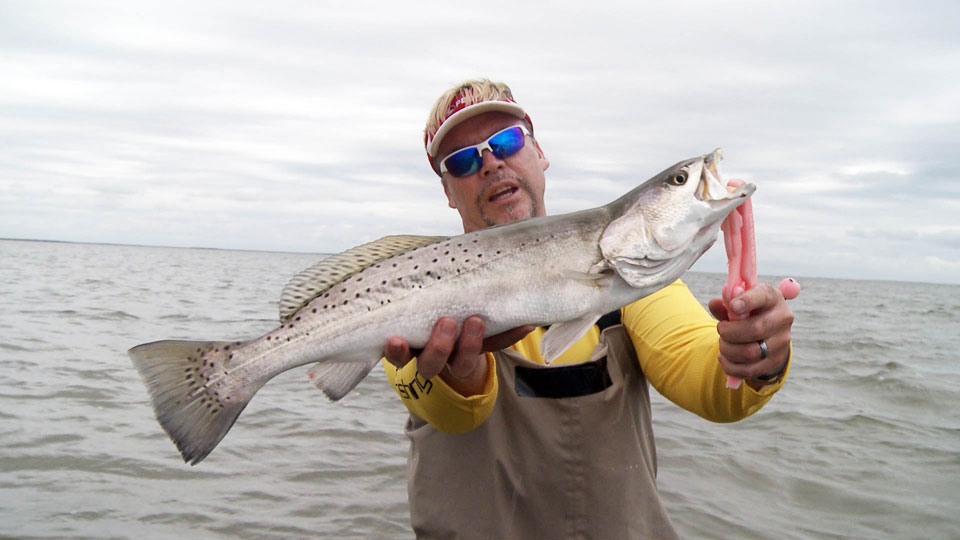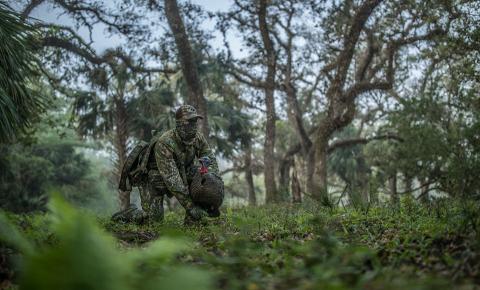Mark Davis of Lexington, South Carolina, is primarily known as a blue-water fisherman - fishing for tarpon, marlin, wahoo, sailfish, grouper, snapper and other species from Montauk, New York, to Brownsville, Texas. He's also an avid inshore fisherman and films offshore and inshore fishing for his TV show, “BigWater Adventures” on the Outdoor Channel. One of the most popular inshore species is the speckled trout, also called the spotted seatrout. We asked Mark his favorite baits to fish for these trout.

Well, first I need to know are we talking about catching eating-size trout or catching what we call big gator trout? Just because the weather is cold or cool, I don’t want you to think that a speckled trout won’t come up from the bottom to eat a topwater bait, because they will, especially if I'm fishing in my backyard where I know the points and mouths of creeks. Depending on the water depth, I'll probably fish some type of soft plastic lure on a jig head in cold weather. I’ll probably be fishing a 1/16-ounce jig head or a 1/4-ounce jig head, depending on the water depth, the speed of the tide and/or the current.
If the fish aren’t very aggressive, I’ll let the jig fall all the way to the bottom, then pop it up, and let it fall back. If there’s current, I’ll sweep the jig along with the current. If I'm fishing for eating-size trout, I’ll often have a popping cork above my jig - the same way I fished when I was a youngster. I've never seen a reason to change. If the trout aren’t aggressive, I may use a somewhat longer leader under the cork. Instead of popping it hard, I’ll jerk my rod tip just enough to make that popping cork make a small ticking sound on the water and splash just a little bit of water out in front of it.
Fishing a popping cork in the wintertime is completely different from fishing a popping cork in the summer. Besides making a sound and a splash, a popping cork allows you to suspend a jig higher up in the water. Even if you're fishing in extremely shallow water, you have to keep moving the cork to keep the jig moving, whether you're popping it slightly or using a steady retrieve. If you don’t, the jig will sink.
Fishing in the winter months, if the fish are holding at four feet, set your popping cork to hold your jig at 3’10”. So, when you pop the popping cork, the jig jumps up. But if you don’t continuously move it, the jig will sink and only have the motion of the current to move it. Even if the trout are in a negative mood, you can get the trout to attack the baits, because you're dropping them right in front of their noses. If I have a good idea where the trout are holding, I’ll start out moving the popping cork fairly slowly. But if the school gets fired-up, I’ll speed up my retrieve and try to catch one right after the other. On any given day in the winter months, I love to watch that popping cork go under when an eating-size trout takes my jig.






























